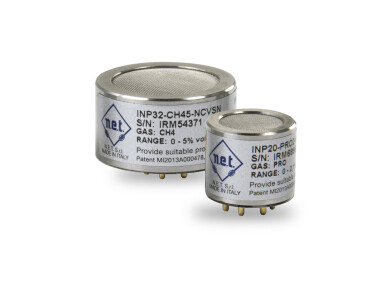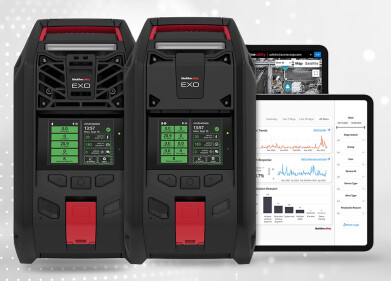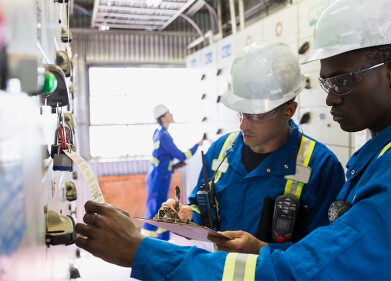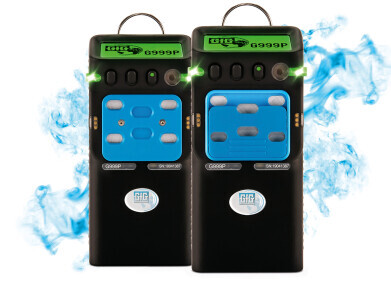Gas detector
Trustworthy Industrial Gas Detection
Oct 04 2015
Instrumentation designed to ensure worker safety, such as gas detectors, are selected to comply with functional standards. These are rated in SIL levels (SIL = Safety Integrity Level). This level depends on the pfd (= probability of failure on demand) and the sff (= safe failure fraction). These parameters quantify the rate of failures acceptable to ensure that dangerous situations are avoided. The smaller pfd, and the bigger sff, the higher the SIL rating. These ratings are in between 1 and 4. To achieve a high SIL rating, manufacturers of instrumentation use high – quality parts and include many test routines in the instrument’s software.
A gas detector operates in the "LOW Demand Mode“, therefore a pfd of 10-2 to 10-3 is sufficient to achieve a SIL 2 rating. Even if a low pfd and a high sff quantify how unlikely a dangerous failure is today, there is no guarantee that a serious failure will not just happen tomorrow!
The everyday reading on the display of a gas detector is "zero“. Most industrial plants operate in a gas – free atmosphere. It is vital that unusual conditions do not go unnoticed. As a rule, a zero reading can always be caused by two reasons, either the gas concentration is really zero or the gas detector has failed.
Murphy`s Law dictates that the latter will happen exactly at the moment when there is a gas leak. Therefore Compur Monitors (Germany) has developed a gas detector which does not only comply with SIL 2, but also tests itself with the target gas. All precautions in order to comply with SIL requirements involve testing the functionality of components – but applying gas to the detector is the ultimate test of the entire system.
The first generation of the Statox 560 product family is a stationary gas detector for toxic gases.
In programmable time intervals the following procedure starts: The sensor head activates a gas generator. This generator produces a tiny amount of the target gas. A micro - pump feeds the gas in front of the sensor. Now the sensor must respond within a certain time window to the gas’ presence. As soon as the signal is emitted within specifications, the generator switches off, and the pump purges the sensor until the signal is zero. This self - test takes less than 2 minutes. Of course the test does not start when gas is present in the surrounding area, or other environmental parameters are altering the usual composition of the surrounding ambient air.
If the sensor fails to respond in time, the sensor head transmits a “system failure” or “maintenance request” signal to the control room, depending if it has still gas detecting capabilities and just needs some routine maintenance, or if is out of function.
The electronics are well protected in an Ex “d” housing. This housing has a window for the display and control buttons. These are operated with a magnetic pin or via a RS 485 interface. Once installed, the Ex d part will stay closed all the time. Connected to the Ex d housing bottom is the sensor module. It includes the sensor, the gas generator and a micro – pump. This module is designed in protection type Ex “i”.
Statox 560 operates with the field – proven Statox 505 sensor family. These sensors have an on – board F - RAM, holding all important sensor parameters, such as target gas, measuring range, calibration history and sensitivity. For maintenance the entire module as well as single parts of it can be replaced without a hot work permit. This means, a calibration in the field is possible, but not necessary. Pre – calibrated sensors or entire sensor modules can be replaced as plug – and – play devices.
The measured value and the system status are transmitted as a 4 – 20 mA analogue signal or an RS 485 interface to the control room. If you want to set up a self – contained gas detection system, it is recommendable to use the Statox 502 control module. This module also complies with SIL 2 requirements. It can be easily installed by just by clipping it onto a DIN rail or even a power rail. It has a digital display, a 4 – 20 mA analogue output and 3 relays for A1, A2 and system alarm, which can operate up to 8 A.
One more option is, to operate the Statox 560 as a stand – alone unit. Without running the signal back and forth to the control room, its open collector outputs can trigger peripheral alarm devices or other components such as fans or ventilation flaps. Four digital signals are accessible to communicate the status on site: Alarm 1, alarm 2, system failure and maintenance request.
The main advantage for the user is: Without leaving the control room, he has 100% peace of mind that his gas detection system is working. This saves lots of time and labour for preventive maintenance and inspection. An investment in a Statox 560 gas detection system will not only give you the best protection from toxic gas, but also will return the investment in a very short time.
Compur Monitors displayed a prototype during Achema. The system will be on the market end of this year.
Digital Edition
PIN 25.6 Buyers' Guide
January 2025
Buyers' Guide Directory - Product Listings by Category - Suppliers Listings (A-Z) Articles Analytical Instrumentation - ASTM D7042: The Quantum Leap in Viscosity Testing Technology -...
View all digital editions
Events
Jan 20 2025 San Diego, CA, USA
Jan 22 2025 Tokyo, Japan
Jan 25 2025 San Diego, CA, USA
SPE Hydraulic Fracturing Technology Conference and Exhibition
Feb 04 2025 The Woodlands, TX, USA
Feb 05 2025 Guangzhou, China



















